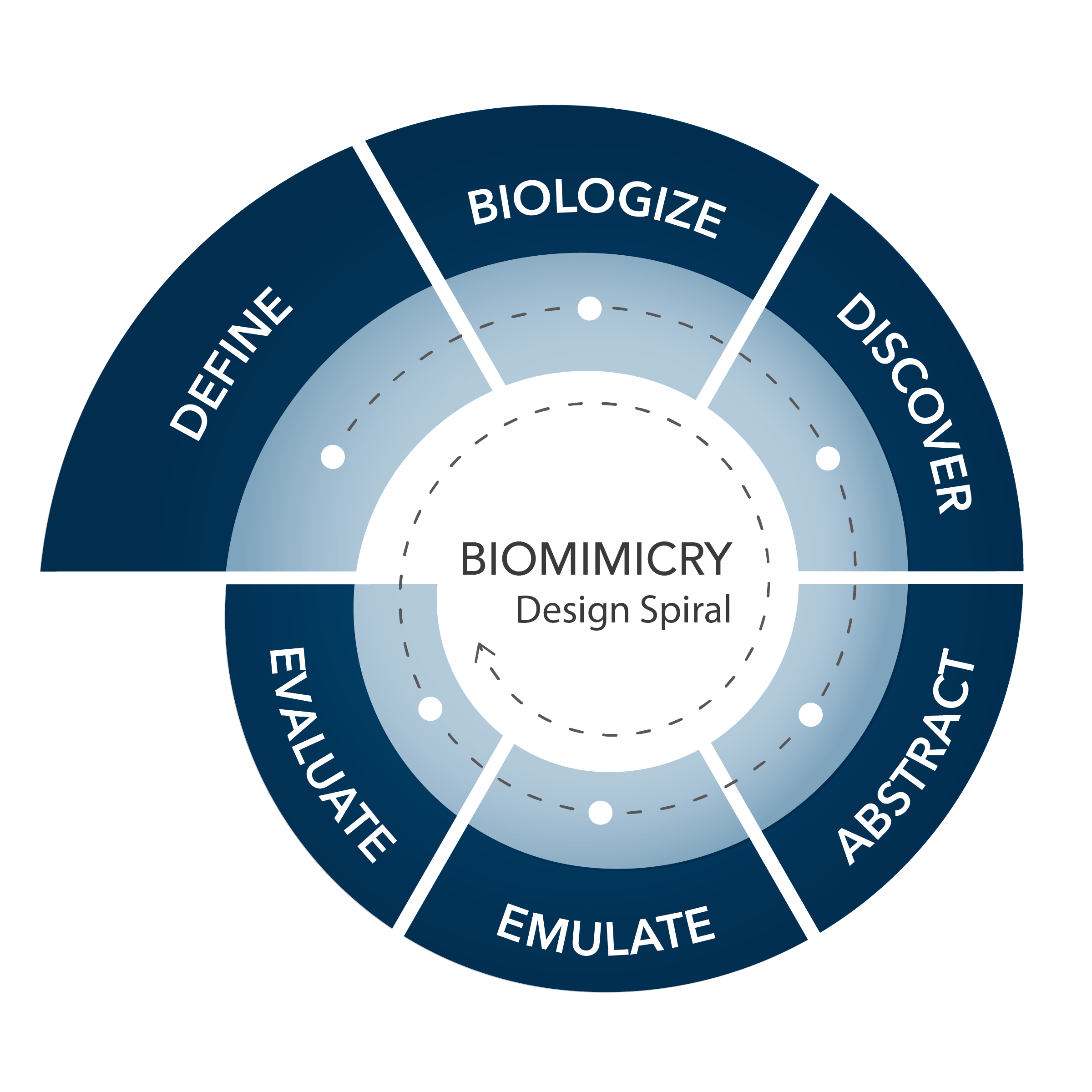Emulate Nature's Lessons
Once you have found a number of biological strategies and analyzed them for the design strategies you can extract, you are ready to begin the creative part—dreaming up nature-inspired solutions. Here we’ll guide you through the key activities of the Emulate step in the Biomimicry Design Spiral.

EMULATE
Look for patterns and relationships among the strategies you found and hone in on the the key lessons that should inform your solution. Develop design concepts based on these strategies.
Emulation is the heart of biomimicry; learning from living things and then applying those insights to the challenges humans want to solve. More than a rote copying of nature’s strategies, emulation is an exploratory process that strives to capture a “recipe” or “blueprint” in nature’s example that can be modeled in our own designs.
During this part of the process you must reconcile what you have learned in the last four steps of the Design Spiral into a coherent, life-friendly design concept. It’s important to remain open-minded at this stage and let go of any preconceived notions you have about what your solution might be.
Tips and suggestions to guide you.
1.
Make it visual.
Organize your bio-inspired design strategies into a visual format or chart. Create categories that sort the strategies by shared features, such as context, constraints, or key mechanisms. The “Uncover Patterns” activity in the Resources section below offers some techniques for doing this.
2.
Revisit your design question.
Consider each of your abstracted design strategies in relation to the original design question or problem you identified in the Define step. Ask, “How can this strategy inform our design solution?” Write down all of your ideas and then analyze them. The Biomimicry Brainstorming Activity in the Resources section below provides one way of doing this.
3.
Explore lots of ideas.
Use techniques like brainstorming, mind-mapping, and sketching to help trigger new ideas. A variety of other helpful tools exist, many developed by practitioners of human-centered design and design thinking. The Design Kit from IDEO.org is one source for free information about some of these strategies. (See the “Ideation” section of the Design Kit, under “Methods.”)
4.
Consider nature’s unifying patterns.
Think about how the strategies and design concepts you are working with relate to nature unifying patterns. What is their role in the larger system? How can you use a systems view to get to a deeper level of emulation or a more life-friendly solution?
Resources
Biomimicry Brainstorming Activity
Use this activity to help your team brainstorm ways to apply your bio-inspired design strategies.
Uncover Patterns
As you look for ways to apply your bio-inspired design strategies, try these techniques to help uncover potentially valuable patterns and insights.
Brainstorming Tips Video
Please enable cookies to view this embedded content!
This functionality/content marked as “Vimeo framework” uses cookies that you chose to keep disabled. In order to view this content or use this functionality, please enable cookies: click here to open your cookie preferences.
Check out this video from the IDEO.org’s Design Kit for an overview on the rules for effective brainstorming.
Keep Learning
In the next step of the Design Spiral, Evaluate, we’ll help you test your ideas and refine them.
Image Credits


